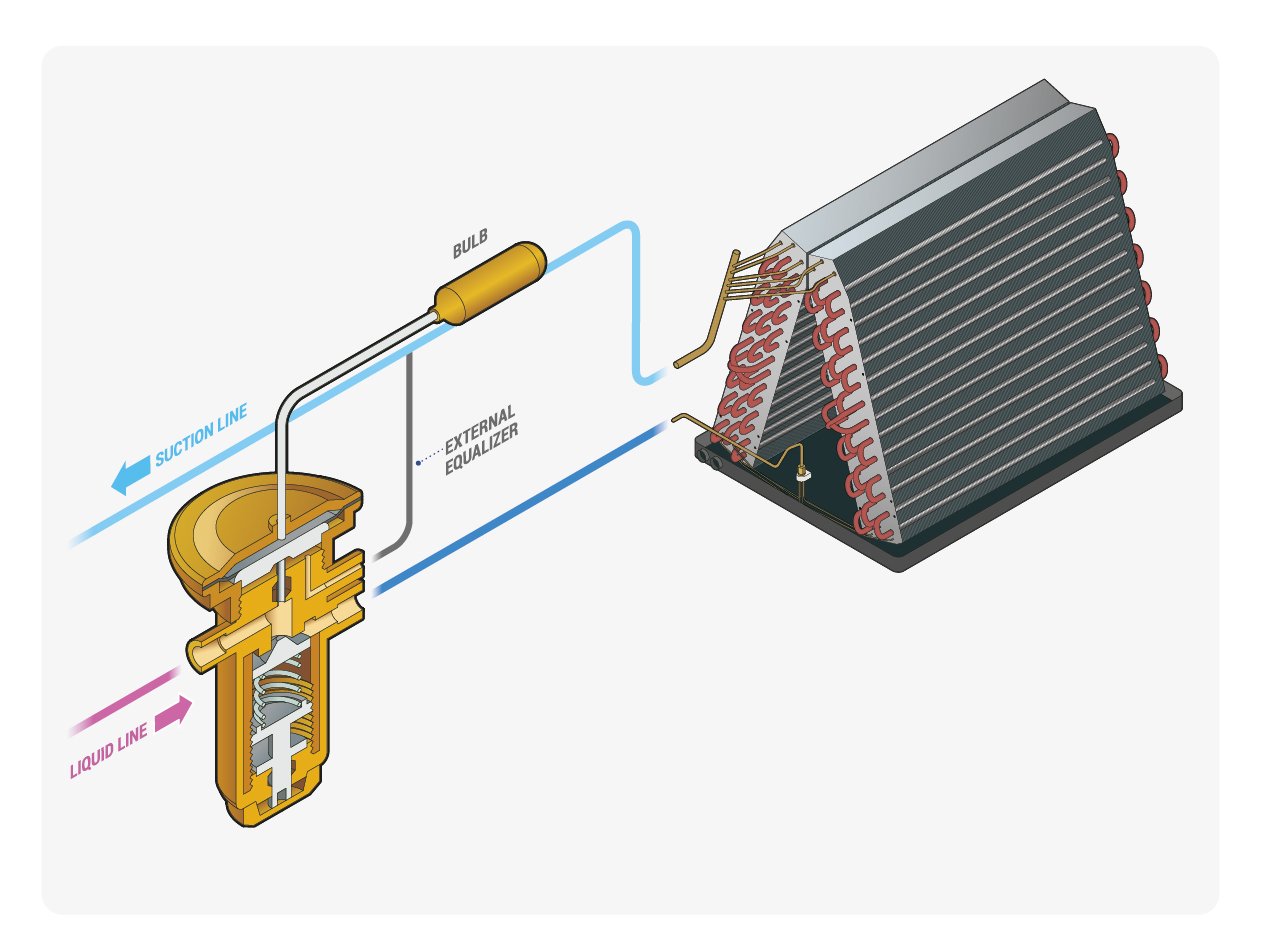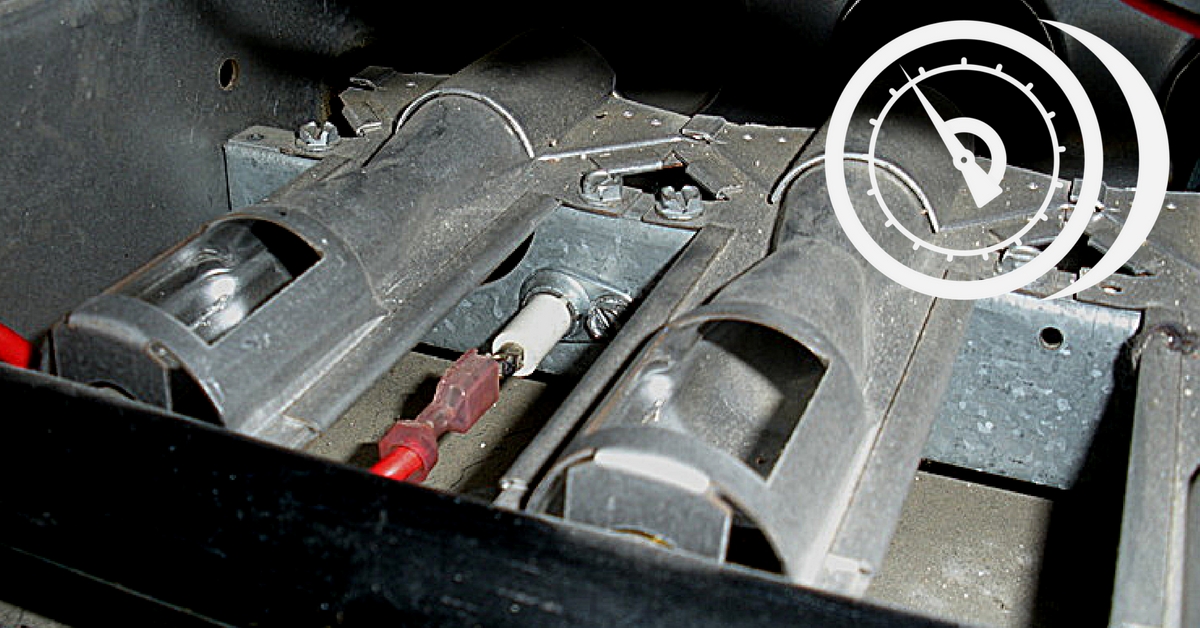Get Tech Tips
Subscribe to free tech tips.
Capacitors – Series and Parallel

Knowing how to combine capacitors in series and parallel properly is a great practical field skill to employ when you need to get a customer up and running, but you don't have the exact size.
Increasing in size is easy. Just connect in parallel and add the two sizes together. For example, if you needed a 70MFD capacitor, you could easily connect a 50 and 20 in parallel, which will add up to 70MFD. Connecting in parallel is as easy as making two jumper wires with connectors, jumping one side of each capacitor to the other, and connecting one side as usual.
Connecting in series is a little more tricky. It goes like this:
Total Capacitance is 1 ÷ (1÷C + 1÷C) = Total MFD When Wired in Series
The result is that the total capacitance will always be less than the smallest capacitor. Let's imagine a real-world scenario where you need a 3MFD capacitor, and all you have is 5 & 7.5 MFD on your van.
The math would be:
1 ÷ (1÷5 + 1÷7.5) = Total MFD
_
1 ÷ (0.2 +.13) = Total MFD
_
1 ÷ (0.33) = Total MFD
_
3.03 = Total MFD
It's definitely not something you will run into every day but a nice knowledge tool to have in the noggin toolbox.
—Bryan










Comments
This is awesome, I just had a call where this would have saved me a few hours and not having to go to supply house to grab cap! Appreciate all you do for industry see you at AHR if it happens!
This is awesome, I just had a call where this would have saved me a few hours and not having to go to supply house to grab cap! Appreciate all you do for industry see you at AHR if it happens!
kamagra oral jelly Achetez vos kamagra medicaments or acheter kamagra site fiable
https://www.nyumon.net/script/sc/redirect.php?id=393&url=https://kamagraprix.com acheter kamagra site fiable
[url=http://www.geokniga.org/ext_link?url=https://kamagraprix.com]Kamagra Commander maintenant[/url] acheter kamagra site fiable and [url=http://www.88moli.top/home.php?mod=space&uid=22318]Kamagra pharmacie en ligne[/url] achat kamagra
kamagra oral jelly Achetez vos kamagra medicaments or acheter kamagra site fiable
https://www.nyumon.net/script/sc/redirect.php?id=393&url=https://kamagraprix.com acheter kamagra site fiable
[url=http://www.geokniga.org/ext_link?url=https://kamagraprix.com]Kamagra Commander maintenant[/url] acheter kamagra site fiable and [url=http://www.88moli.top/home.php?mod=space&uid=22318]Kamagra pharmacie en ligne[/url] achat kamagra
https://tadalmed.shop/# Tadalafil 20 mg prix sans ordonnance
https://tadalmed.shop/# Tadalafil 20 mg prix sans ordonnance
kamagra oral jelly [url=https://kamagraprix.com/#]Achetez vos kamagra medicaments[/url] Kamagra Oral Jelly pas cher
kamagra oral jelly [url=https://kamagraprix.com/#]Achetez vos kamagra medicaments[/url] Kamagra Oral Jelly pas cher
pharmacie en ligne france livraison belgique: Meilleure pharmacie en ligne – pharmacie en ligne livraison europe pharmafst.com
pharmacie en ligne france livraison belgique: Meilleure pharmacie en ligne – pharmacie en ligne livraison europe pharmafst.com
cialis generique: Tadalafil 20 mg prix sans ordonnance – Tadalafil 20 mg prix en pharmacie tadalmed.shop
cialis generique: Tadalafil 20 mg prix sans ordonnance – Tadalafil 20 mg prix en pharmacie tadalmed.shop
Cialis generique prix [url=http://tadalmed.com/#]cialis prix[/url] Acheter Cialis 20 mg pas cher tadalmed.com
Cialis generique prix [url=http://tadalmed.com/#]cialis prix[/url] Acheter Cialis 20 mg pas cher tadalmed.com
pharmacie en ligne avec ordonnance: Medicaments en ligne livres en 24h – pharmacie en ligne pharmafst.com
pharmacie en ligne avec ordonnance: Medicaments en ligne livres en 24h – pharmacie en ligne pharmafst.com
Excellent post. Keep posting such kind of info on your blog. Im really impressed by your blog.
Hey there, You have performed an incredible job. I’ll certainly digg it and for my part suggest to my friends. I am sure they’ll be benefited from this web site.
Excellent post. Keep posting such kind of info on your blog. Im really impressed by your blog.
Hey there, You have performed an incredible job. I’ll certainly digg it and for my part suggest to my friends. I am sure they’ll be benefited from this web site.
olympe casino cresus: casino olympe – olympe
olympe casino cresus: casino olympe – olympe
To leave a comment, you need to log in.
Log In